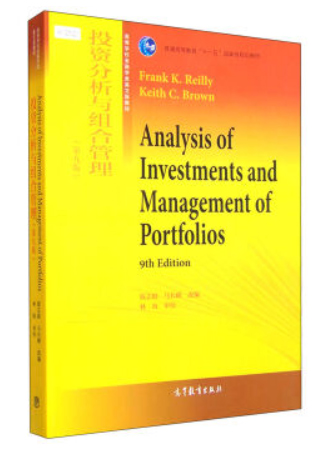会计英语 / 普通高等学校成人高等教育会计学精品教材
定价:¥24.00
作者: 白蔚秋
出版时间:2010-08
出版社:大连出版社
- 大连出版社
- 9787806849071
- 1-1
- 45086
- 61157886-5
- 平装
- 16开
- 2010-08
- F230
- 财会
- 本科
内容简介
随着我国会计国际化进程的不断加快,将专业英语教学引入成人教育会计专业已经刻不容缓,这将大大提升学生的专业能力和执业水平。本书主要以接受成人教育的学生为对象,在知识结构、难易程度、语言表达等方面均力求符合成人教育的特点,理论与实务有机结合。在本书的编写过程中,编者参阅了美国多个最新版本的会计教科书,着重介绍会计的基本理论、方法和概念,充分体现了会计学科的系统性和专业性。
目录
Chapter 1 Accounting and Business Organization
1.1 Types of Businesses
1.2 Types of Business Organizations
1.3 The Role of Accounting in Business
1.4 Profession of Accounting
1.5 Generally Accepted Accounting Principles
1.6 Accounting Equation
1.7 Financial Statements and Interrelationships among Them
参考译文
Chapter 2 Analyzing Transactions
2.1 Using Accounts to Record Transactions
2.2 Journal
2.3 Double-Entry Accounting System
2.4 Posting Journal Entries to Accounts
2.5 Trial Balance
参考译文
Chapter 3 Adjusting Process
3.1 Types of Accounts Requiring Adjustment
3.2 Adjusting Entries
3.3 Summary of the Adjusting Process
3.4 Adjusted Trial Balance
参考译文
Chapter 4 Closing Entries and Accounting Cycle
4.1 The Reasons for Closing the Accounts
4.2 Closing Steps and Closing Entries
4.3 Post-Closing Trial Balance
4.4 Accounting Cycle
参考译文
Chapter 5 Inventories
5.1 Inventory Cost Flow Assumptions
5.2 Perpetual Inventory System
5.3 Periodic Inventory System
5.4 Estimating Inventory Cost
参考译文
Chapter 6 Receivables
6.1 Classifications of Receivable
6.2 Uncollectible Receivable
6.3 Direct Write-off Method for Uncollectible Accounts
6.4 Allowance Method Uncollectible Accounts
6.5 Notes Receivable
参考译文
Chapter 7 Fixed Assets and Intangible Assets
7.1 Nature of Fixed Assets
7.2 Accounting for Depreciation
7.3 Disposal of Fixed Assets
7.4 Intangible Assets
参考译文
Chapter 8 Current Liabilities and Contingent Liabilities
8.1 Current Liabilities
8.2 Contingent Liabilities
参考译文
Chapter 9 Partnerships
9.1 Characteristics of a Partnership
9.2 Forming a Partnership
9.3 Dividing Income
9.4 Admitting a Partner
9.5 Withdrawal of a Partner
9.6 Liquidating Partnerships
参考译文
Chapter 10 Corporations
10.1 Characteristics of a Corporation
10.2 Advantages of the Corporate Form of Organization
10.3 Disadvantages of the Corporate Form of Organization
10.4 Formation of a Corporation
10.5 Characteristics and Classes of Stock
10.6 Issuing Stock
10.7 Cash Dividends
10.8 Stock Dividends
10.9 Stockholders' Equity Section in the Balance Sheet
10.10 Stock Splits
参考译文
Chapter 11 Bonds Payable
11.1 Characteristics of Bonds
11.2 Types of Bond
11.3 Tax advantage of bond financing
11.4 Bonds Issued at Face Amount
11.5 Bonds Issued at a Discount
11.6 Bonds Issued at a Premium
11.7 Bonds Sinking Funds
11.8 Bond Redemption
参考译文
Chapter 12 Financial Statements Analysis
12.1 Basic Analytical Procedures
12.2 Solvency Analysis
12.3 Profitability Analysis
参考译文
Chapter 13 Management Accounting Concepts
13.1 The Differences between Managerial and Financial Accounting
13.2 The Management Accountant in the Organization
13.3 Managerial Accounting in the Management Process
参考译文
Chapter 14 Cost Concepts and Classifications
14.1 General Cost Classifications
14.2 Product Costs versus Period Costs
参考译文
Chapter 15 Cost Behavior and Cost-Volume-Profit Analysis
15.1 Cost Behavior
15.2 Cost-Volume-Profit Relationships
15.3 Break-Even Analysis
参考译文
Chapter 16 Budgeting
16.1 Objectives of Budgeting
16.2 Static Budget and Flexible Budget
16.3 Master Budget
参考译文
参考文献
教学课时建议
1.1 Types of Businesses
1.2 Types of Business Organizations
1.3 The Role of Accounting in Business
1.4 Profession of Accounting
1.5 Generally Accepted Accounting Principles
1.6 Accounting Equation
1.7 Financial Statements and Interrelationships among Them
参考译文
Chapter 2 Analyzing Transactions
2.1 Using Accounts to Record Transactions
2.2 Journal
2.3 Double-Entry Accounting System
2.4 Posting Journal Entries to Accounts
2.5 Trial Balance
参考译文
Chapter 3 Adjusting Process
3.1 Types of Accounts Requiring Adjustment
3.2 Adjusting Entries
3.3 Summary of the Adjusting Process
3.4 Adjusted Trial Balance
参考译文
Chapter 4 Closing Entries and Accounting Cycle
4.1 The Reasons for Closing the Accounts
4.2 Closing Steps and Closing Entries
4.3 Post-Closing Trial Balance
4.4 Accounting Cycle
参考译文
Chapter 5 Inventories
5.1 Inventory Cost Flow Assumptions
5.2 Perpetual Inventory System
5.3 Periodic Inventory System
5.4 Estimating Inventory Cost
参考译文
Chapter 6 Receivables
6.1 Classifications of Receivable
6.2 Uncollectible Receivable
6.3 Direct Write-off Method for Uncollectible Accounts
6.4 Allowance Method Uncollectible Accounts
6.5 Notes Receivable
参考译文
Chapter 7 Fixed Assets and Intangible Assets
7.1 Nature of Fixed Assets
7.2 Accounting for Depreciation
7.3 Disposal of Fixed Assets
7.4 Intangible Assets
参考译文
Chapter 8 Current Liabilities and Contingent Liabilities
8.1 Current Liabilities
8.2 Contingent Liabilities
参考译文
Chapter 9 Partnerships
9.1 Characteristics of a Partnership
9.2 Forming a Partnership
9.3 Dividing Income
9.4 Admitting a Partner
9.5 Withdrawal of a Partner
9.6 Liquidating Partnerships
参考译文
Chapter 10 Corporations
10.1 Characteristics of a Corporation
10.2 Advantages of the Corporate Form of Organization
10.3 Disadvantages of the Corporate Form of Organization
10.4 Formation of a Corporation
10.5 Characteristics and Classes of Stock
10.6 Issuing Stock
10.7 Cash Dividends
10.8 Stock Dividends
10.9 Stockholders' Equity Section in the Balance Sheet
10.10 Stock Splits
参考译文
Chapter 11 Bonds Payable
11.1 Characteristics of Bonds
11.2 Types of Bond
11.3 Tax advantage of bond financing
11.4 Bonds Issued at Face Amount
11.5 Bonds Issued at a Discount
11.6 Bonds Issued at a Premium
11.7 Bonds Sinking Funds
11.8 Bond Redemption
参考译文
Chapter 12 Financial Statements Analysis
12.1 Basic Analytical Procedures
12.2 Solvency Analysis
12.3 Profitability Analysis
参考译文
Chapter 13 Management Accounting Concepts
13.1 The Differences between Managerial and Financial Accounting
13.2 The Management Accountant in the Organization
13.3 Managerial Accounting in the Management Process
参考译文
Chapter 14 Cost Concepts and Classifications
14.1 General Cost Classifications
14.2 Product Costs versus Period Costs
参考译文
Chapter 15 Cost Behavior and Cost-Volume-Profit Analysis
15.1 Cost Behavior
15.2 Cost-Volume-Profit Relationships
15.3 Break-Even Analysis
参考译文
Chapter 16 Budgeting
16.1 Objectives of Budgeting
16.2 Static Budget and Flexible Budget
16.3 Master Budget
参考译文
参考文献
教学课时建议








